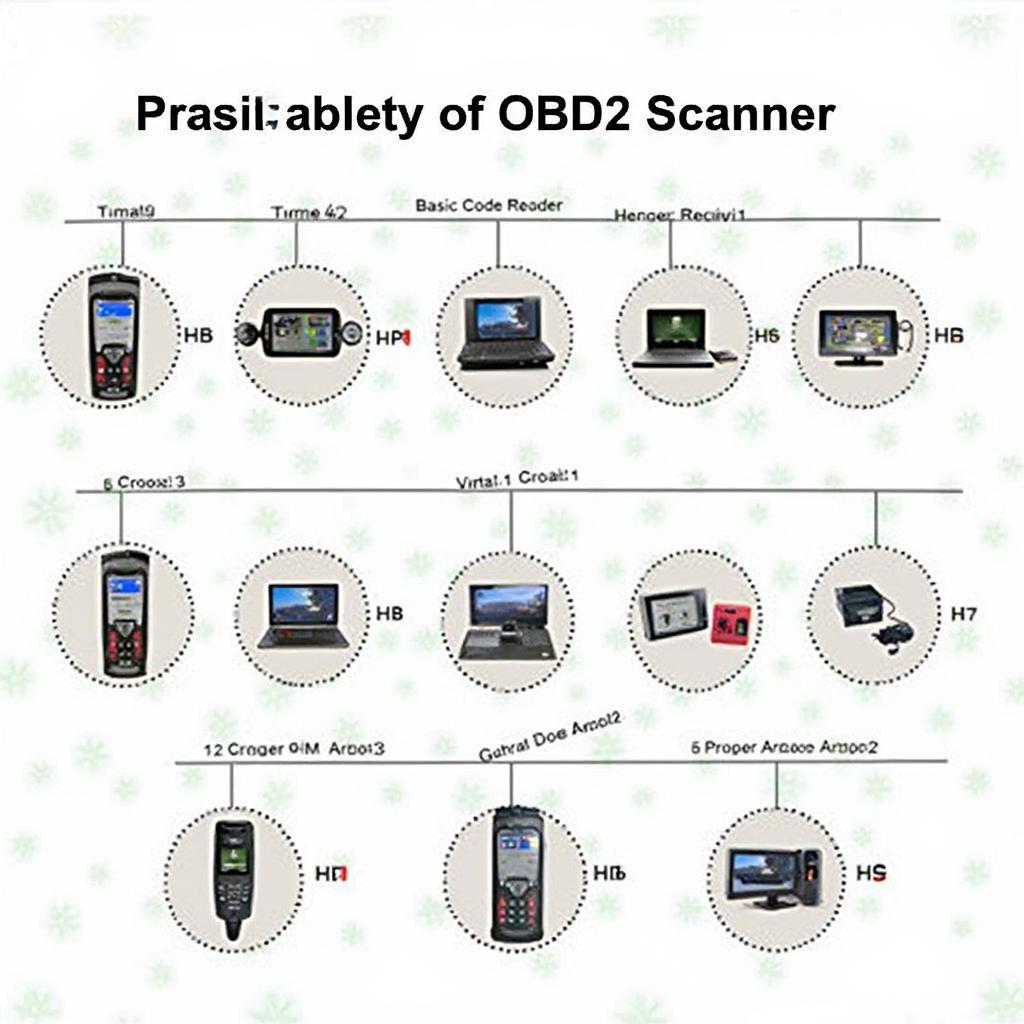OBD2, or On-Board Diagnostics II, has become an essential part of modern vehicle maintenance and repair. But when did cars start having OBD2? Understanding its history helps us appreciate the significance of this technology in today’s automotive world. This article dives into the evolution of OBD2, exploring its origins and its impact on the automotive industry.
In the early days of automobiles, diagnosing car problems was a much more manual and often time-consuming process. Mechanics relied heavily on experience, intuition, and sometimes even guesswork. The introduction of OBD systems marked a significant shift towards standardized diagnostics. But when exactly did the OBD2 standard, the one we use today, become mandatory?
The History and Evolution of OBD2: From Humble Beginnings to Standardized Diagnostics
Before OBD2, there was OBD1, a less sophisticated system that lacked standardization. Each manufacturer had its own proprietary system, making diagnostics challenging for independent mechanics. The need for a unified system became apparent, leading to the development and eventual mandate of OBD2. The answer to “when did cars start having OBD2” is often tied to the Clean Air Act Amendments of 1990 in the United States.
The Clean Air Act Amendments and the Birth of OBD2
The Clean Air Act Amendments of 1990 played a pivotal role in the standardization of on-board diagnostics. These amendments mandated that all new vehicles sold in the United States starting in 1996 be equipped with OBD2. This marked a significant step towards reducing emissions and improving air quality.
While 1996 is the key year for OBD2’s widespread adoption, some manufacturers began incorporating OBD2 systems into their vehicles even earlier. This proactive approach helped pave the way for the seamless transition to the standardized system.
OBD2’s Global Impact: Beyond the United States
The impact of OBD2 extended beyond the United States. Other countries recognized the benefits of standardized diagnostics and adopted similar regulations. While implementation timelines varied, the global automotive industry largely embraced OBD2, further solidifying its importance.
Understanding the Benefits of OBD2: Why Standardized Diagnostics Matter
Why was the shift to OBD2 so important? The answer lies in the numerous benefits it offered to car owners, mechanics, and the environment. Let’s explore some of the key advantages:
- Simplified Diagnostics: OBD2 provided a common language for communicating with a vehicle’s computer, making it easier for mechanics to identify and address issues.
- Reduced Emissions: By enabling more accurate diagnostics, OBD2 contributed to lower vehicle emissions, benefiting the environment.
- Improved Fuel Efficiency: Addressing issues identified through OBD2 diagnostics could lead to improved fuel efficiency, saving car owners money.
- Enhanced Transparency: OBD2 empowered car owners with more information about their vehicles’ health, allowing them to make informed maintenance decisions.
OBD2 Today and Beyond: A Cornerstone of Automotive Technology
OBD2 remains a cornerstone of automotive technology. It continues to evolve, adapting to advancements in vehicle technology and emissions regulations. Understanding its functions is more crucial than ever. You might find our article about obd2 scanner functions useful for a deeper understanding. Also, for those curious about specific models like the 1995 Blazer, we have an article answering the question: does 95 blazer have obd2 port.
The Future of OBD2: What Lies Ahead?
As vehicles become increasingly complex, OBD2 is likely to play an even more significant role in diagnostics and maintenance. Future iterations may incorporate wireless communication and more advanced data analysis capabilities.
Conclusion: OBD2’s Lasting Legacy
The introduction of OBD2 marked a turning point in the automotive industry. Since its widespread adoption in 1996, driven by the Clean Air Act Amendments, OBD2 has revolutionized vehicle diagnostics, contributing to cleaner air and more efficient vehicles. Understanding when cars started having OBD2 is crucial for appreciating the significance of this technology in shaping the automotive landscape we know today.
FAQ
- What does OBD2 stand for? OBD2 stands for On-Board Diagnostics II.
- Is OBD2 mandatory in all countries? While widely adopted, OBD2 mandates vary by country.
- Can I use any OBD2 scanner on my car? Most OBD2 scanners are compatible with OBD2-compliant vehicles, but certain advanced features may require specific scanners.
- What are some common OBD2 codes? P0420 (Catalyst System Efficiency Below Threshold) and P0171 (System Too Lean (Bank 1)) are among the more common codes.
- How can I fix an OBD2 code? Addressing the underlying issue causing the code requires proper diagnosis and repair by a qualified mechanic.
- Can I clear OBD2 codes myself? Yes, you can typically clear codes using an OBD2 scanner, but this won’t resolve the underlying issue.
- Does my car have OBD2? Cars manufactured in the United States from 1996 onwards are required to have OBD2.
 Different Types of OBD2 Scanners
Different Types of OBD2 Scanners
You might also be interested in exploring other articles on our website related to car diagnostics and OBD2 scanner functionalities. For any assistance or inquiries, feel free to contact us via WhatsApp: +1(641)206-8880, Email: [email protected] or visit our office at 789 Elm Street, San Francisco, CA 94102, USA. Our customer service team is available 24/7.

